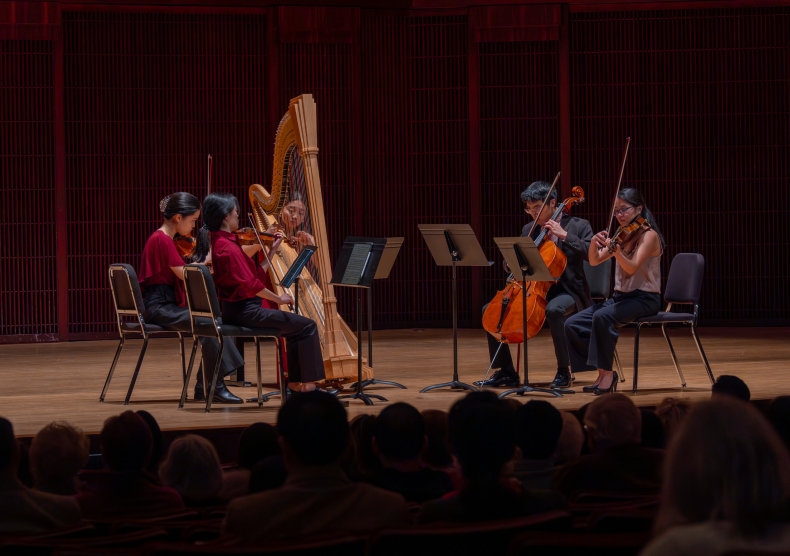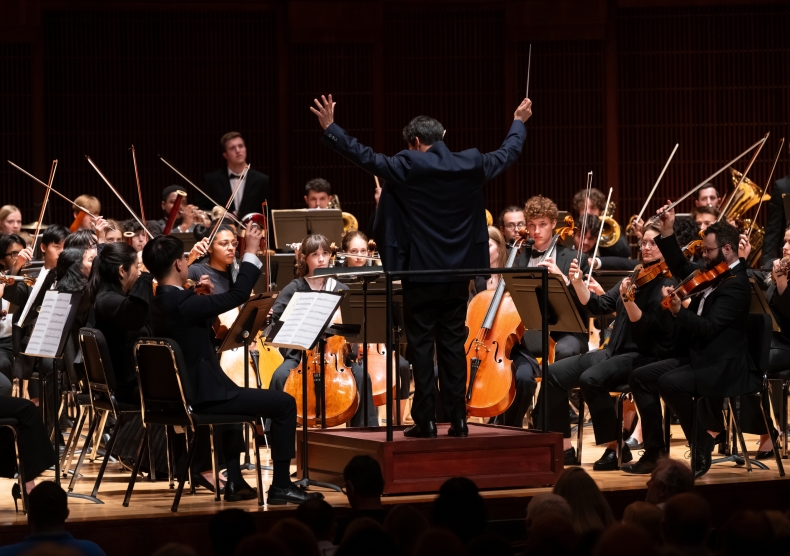Speaker: Christopher Besch Doctoral Candidate Thesis Defense Department: Shepherd School of Music
Many vocal pedagogy textbooks and curriculums lack a tangible application of the course content. This is often remedied with recorded excerpts or lesson practicums, but both options include a wide degree of variability that limits the students’ and teachers’ ability to apply the concepts they’ve learned. In this paper, we will explore how the use of the spectrograph and tone generator fills that gap between the understanding the mechanics of singing and applying that understanding. This paper uses the software VoceVista, which is one of the most intuitive and accessible applications currently available. The spectrograph and tone generator gives us the ability to mimic and manipulate a digital version the human voice, affording us the opportunity to explore the techniques of vocal pedagogy free of the limitations of a real-world environment, such as room acoustics and vocal timbre variability due to health and technical ability. Combined with a detailed understanding of vocal tract physiology, acoustics, and psychoacoustics, the use of this tool gives us a view of the voice that encourages the exploration of more efficient and effective pedagogies. Chapter 1 explores how the tone generator can be used to synthesize the human voice using the four basic properties of sound – frequency, amplitude, duration, and timbre. Chapter 2 details how our perception of sound varies from what is shown on the spectrograph and how the human ear exerts its own influence over timbre to create vowel colors through the properties of psychoacoustics – auditory roughness, perceived loudness, absolute spectral tone color, and the missing fundamental. Chapter 3 combines these ideas to demonstrate how passive vowel migration and active vowel modification are used in vocal techniques such as high frequency reinforcement, upper treble transitions, second vocal tract resonance tuning, and belting. This approach to vocal pedagogy brings together the study of acoustics, psychoacoustics, and singing technique to eliminate some of the guess work of vocal pedagogy and improve access to effective pedagogical information. Christopher Besch is inviting you to a scheduled Zoom meeting. Topic: Christopher Besch’s Personal Meeting Room Join Zoom Meeting https://riceuniversity.zoom.us/j/3632379092?pwd=amU3MCt1aXJ2VTlVblRqK1V… Meeting ID: 363 237 9092 Passcode: fpN2P8 One tap mobile +13462487799,,3632379092# US (Houston) +12532158782,,3632379092# US (Tacoma) Dial by your location +1 346 248 7799 US (Houston) +1 253 215 8782 US (Tacoma) +1 669 900 6833 US (San Jose) +1 312 626 6799 US (Chicago) +1 646 876 9923 US (New York) +1 301 715 8592 US (Washington DC) Meeting ID: 363 237 9092 Find your local number: https://riceuniversity.zoom.us/u/ab5UwZJ1Rx Join by SIP 3632379092@zoomcrc.com Join by H.323 162.255.37.11 (US West) 162.255.36.11 (US East) 115.114.131.7 (India Mumbai) 115.114.115.7 (India Hyderabad) 213.19.144.110 (Amsterdam Netherlands) 213.244.140.110 (Germany) 103.122.166.55 (Australia Sydney) 103.122.167.55 (Australia Melbourne) 149.137.40.110 (Singapore) 64.211.144.160 (Brazil) 69.174.57.160 (Canada Toronto) 65.39.152.160 (Canada Vancouver) 207.226.132.110 (Japan Tokyo) 149.137.24.110 (Japan Osaka) Meeting ID: 363 237 9092 Passcode: 809055 (Department : Shepherd School of Music)




